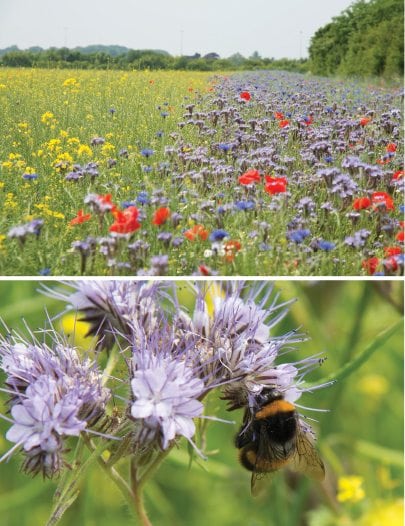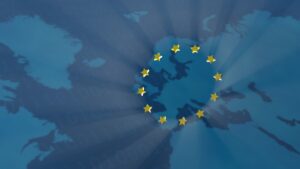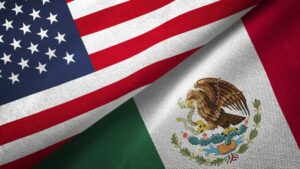The seed industry speaks out on the ban of neonicotinoids seed treatments as the full impact of the ban is felt on EU crop production.

The last couple of months have seen further developments in the long running debate over whether neonicotinoid pesticides impact the health of bees and the environment. To find out the latest, European Seed spoke with Georg Goeres, Syngenta’s EAME Head of Seedcare.
The developments follow the imposition of a restriction in 2013 by the European Commission on some uses of these pesticides, particularly those used to treat seed or as granules. More recently, the European Food Safety Authority (EFSA) issued a further report on other uses of neonicotinoid pesticides, such as foliar applications, in which it used an unapproved regulatory standard to highlight data gaps and potential risks to bees.
However, EFSA and the European Commission appear to be increasingly out of step with its own Member States. Several EU countries argue that whether it is for seed treatment or foliar applications, these data gaps and potential risks are only emerging because of the use of an unapproved, low-tier and overly precautionary regulatory standard, (known as the EFSA Bee Risk Guidance Document).
Member States continue to argue that the technology can be used safely which is why countries like Denmark, Finland, Romania and the United Kingdom, amongst others, have allowed their farmers to continue to use neonicotinoid seed treatments, albeit on a more limited basis. This is consistent with the position of Syngenta who has repeatedly argued that the evidence base and process through which the European Commission restricted the technology was flawed and is why legal action was taken by both Syngenta and Bayer CropScience.
Indeed, many scientific stakeholders argue that neonicotinoid pesticides actually play a limited role in bee health, which they believe to be influenced to a much greater extent by weather, access to food, and disease and viruses.
Support From Other Quarters
In this respect, these stakeholders have been supported by some rather unlikely allies. The British Bee Keepers Association, along with a growing number of other similar organisations in Europe, expressed concern that the restriction on neonicotinoids may force farmers to use older technologies which may have a more detrimental impact on the health of pollinators like bees. Certainly, market research suggests that growers, in an effort to combat alarmingly high levels of flea beetle infestations, have fallen back to using such older pesticides and spraying their crops more frequently. In fact, the leading voice for Europe’s producers, COPA-COGECA expects to see EU oilseed rape (OSR) production to drop by 10.6 per cent. They also anticipate a 7.5 per cent decline in cereal output this year, and attribute these precipitous declines primarily to the ban.
At the EU country-level we’ve witnessed severe crop damage:
- Germany has experienced a six per cent decline of OSR growing area. Ninety per cent of OSR damaged and 30 per cent of the 1.309 million hectares was seen to suffer from severe flea beetle attack. A lot more insecticide sprays now. There’s also confirmed increase in resistance issues towards pyrethroid insecticides.
- In the UK, 38,000 ha were not planted due to lack of crop protection products. In total, yield of OSR in the UK decreased by 60,000 ha or 10 per cent primarily due to flea beetle. Foliar insecticide spraying increased four-fold, reaching 100 per cent treated area in parts of the east and southeast.
- And in Sweden, the area of spring oilseed rape significantly decreased: 54,000 ha (2013) -> 14,700 ha (2014) -> 6,000 ha (2015) = 90 per cent reduction. Increase in number of sprays from 2 per ha to 5.5 sprays per ha.
Beyond the EU, in May 2015, U.S. President Barack Obama’s administration published its National Pollinator Strategy, which clearly argues that there are multiple factors impacting bee health, rather than just one. Thus far, the U.S. government along with virtually all other major governments around the world have continued to support the use of neonicotinoid pesticide seed treatment technology, which remains one of the most innovative and environmentally friendly forms of crop protection.
In Australia, neonicotinoid-based seed treatments are used widely but there have been no reports of significant declines in the health of bees. Following the Australian government’s thorough scientific review, this class of chemistry has again been granted a clean bill of health.
Positive News For Pollinators?
The argument of these stakeholders, that pesticides are not to blame, has been reinforced by the publication of new evidence over the past 12 months or so, which shows that bee populations, particularly honeybees, are actually more resilient and in better shape than initially thought.
Last year, a new model for assessing the health of bee colonies1, developed by Rothamsted Research and BBSRC, was published in the Journal of Applied Ecology. The BEEHAVE model shows that honeybee colonies are much more resilient than previously assumed and that access to food is the key factor in their health.
At its bee health conference in Brussels in April 2014, the European Commission also conceded that the decline in honey bee health had not been as dramatic as initially thought. It based this conclusion on the results of Epilobee, the first comprehensive study of bee health in Europe 2. This has since been reinforced by the COLOSS official monitoring project which has shown that rates of honeybee bee mortality in the critical over-wintering period are now at the lowest level since they started their research in 2007. What is particularly interesting is that this research also coincided with the last seasons in which neonicotinoid seed treatments were widely used in the EU. A report in the journal Environmental Toxicology and Chemistry reviewed bee health over multiple years and reached a similar conclusion as well as suggesting that bee mortality rates appeared to be higher in those (northern) parts of Europe where insecticide use was actually lowest.

Renewed Calls For A Complete Ban
In contrast, there continues to be a significant amount of media interest in publications which present an alternative view – that neonicotinoids are responsible for the decline in bee health and present a broader threat to the environment. Indeed, having appeared to have lost the argument on honeybee health, recent publications from anti-pesticide activist groups have tended to concentrate on bumblebees and solitary bees. This is an easy target because far less is known about these populations and what, if anything, is impacting their health. In short, these groups have conveniently changed the narrative: a tacit admission that there was no ‘bee-pocalypse’ in the first place.
It is possible that some of these publications have been deliberately timed to counter the more positive evidence that has emerged on neonicotinoids. Certainly, the publication of the IUCN Task Force on Systemic Pesticides, last year, which claimed that the impact of neonicotinoids was the same as DDT, appeared rushed and reads more like a political tract than a robust scientific inquiry.
At their press conference in Brussels, the Task Force failed to present the evidence on which their conclusions were based. Although they claimed to have reviewed more than 800 papers as part of the literature review, they were unable to provide a list of these papers or to explain why more positive evidence on neonicotinoids had been rejected and on what basis.
Unfortunately, bad news in the press continues to sell more advertising and raise more money for activist groups, but it is important to keep in mind that these publications are being made as part of a concerted effort by individuals and groups who are well known for their commitment to restrict and ban neonicotinoid pesticide technology. This well-funded, sensationalist campaign is global in scope and should not be underestimated.
Indeed, when Syngenta’s experts in product safety – along with others in the academic and government sectors – are able to examine the publications in detail, they invariably found that the studies concentrate on hazard, present very little or no new evidence – and are therefore speculative. Moreover, these studies ignore the various risk management tools which have ensured the safe use of neonicotinoid pesticides on millions of acres of European crops over the past decade.
What Can the Industry Do?
Syngenta has a long standing commitment to bee and pollinator health. It’s easy to forget how important this is to the sustainability of our business, especially when one considers that our seed production activities rely on pollinators like bees. Indeed, we use around 13,000 hives for these purposes every year around the globe.
Syngenta also firmly believes in the safety of its neonicotinoid product thiamethoxam towards the pollinators and the environment and the company stands behind its products. It was for this reason that Syngenta collaborated with Bayer CropScience in launching the Five Point Bee Health Action Plan in 2013 and over the past couple of years considerable progress has been made, including:
- A major scale up in the creation of pollen rich, flowering field margins providing essential habitat and nutrition for bees, thereby enhancing biodiversity on nearly 150,000 hectares of farmland in the EU.
- Prototyping new air-cleaning technology for seed drilling equipment to further reduce dust emissions.
- Stepping up investment in various bee and pollinator health research projects focusing on control of the highly damaging Varroa mite and increasing bee nutrition.
- Invested more than $3 million in the first comprehensive multi-country field monitoring program for bee health and neonicotinoids. The program is being conducted independently by the Center for Ecology and Hydrology and should report before the end of 2016.
- Provided cost effective deflectors for sowing machinery to thousands of growers in selected pilot countries to demonstrate that dust emissions from the drilling of seed treated with neonicotinoids (and other pesticides) can be reduced by more than 90 per cent.
In addition to this, the two companies have submitted an updated data package which reconfirms the safety of seeds treated with neonicotinoid pesticides. This includes a new peer reviewed study that replicated a previous one done by Mikael Henry, which used RFID technology to track the behaviour of bees after exposure to these pesticides. The results of this latest study, conducted this time under realistic field conditions, showed no impact on the foraging behaviour of bees.
What’s Next
There is no certainty about what comes next. We know the debate on these pesticides will continue in Europe for some time but we remain convinced of their safety, both for bees and the wider environment. Syngenta will continue supporting the Action Plan and publishing our own studies which examine the safety. But a lot is also riding on the study being conducted by the Center for Ecology and Hydrology across several EU countries. Whatever EFSA’s Bee Risk Guidance Document says, this landscape study has been conducted on an unprecedented scale under realistic field conditions. This will go a long way to deciding the debate on neonicotinoid pesticides in the European Union.
The final results are expected next year but in the meantime, it’s likely that those countries who wish to issue the emergency use permits will go on doing so, whilst others will agitate for a complete ban.
Where On The Web:
For some additional sources of information on neonicotinoids and bees visit:
- UK Government official position on neonicotinoids and bees – https://www.gov.uk/government/uploads/system/uploads/attachment_data/file/221052/pb13937-neonicotinoid-bees-20130326.pdf
- UK bee numbers are improving according to beekeepers (with neonicotinoids in use) – http://www.bbka.org.uk/files/pressreleases/bbka_winter_survival_release_18_june_2014_1403026705.pdf
- Forbes article setting out the political process driving the EU restriction of neonicotinoids – http://www.forbes.com/sites/jonentine/2013/09/24/while-global-bee-colonies-recover-european-politicians-seem-determined-to-kill-them-off/
Editor’s Note: Georg Goeres is the Head Seedcare EAME at Syngenta Crop Protection.
1 BEEHAVE: a systems model of honeybee colony dynamics and foraging to explore multifactorial causes of colony failure Journal of Applied Ecology, Volume 51, Issue 2, Article first published online: 4 MAR 2014 doi: 10.1111/1365-2664.12222
2 A pan-European epidemiological study on honeybee colony losses http://ec.europa.eu/food/animals/live_animals/bees/docs/bee-report_en.pdf













